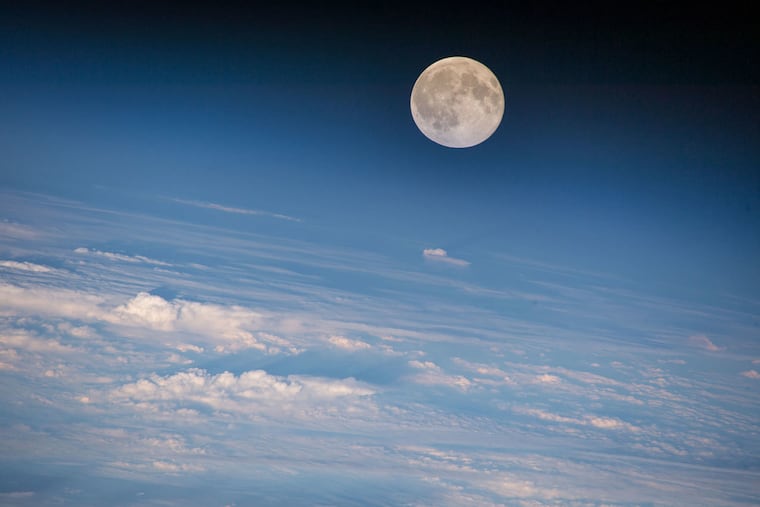The Hunter Moon will be a harvest for sky-watchers Monday night and Tuesday morning
By any name, the full moon will be burning bright, cold, and beautifully.

It might be an otherwise unexceptional satellite, an alternately white-hot and ice-cold rock with about as much atmosphere as the average strip mall, but the moon certainly has had profound impacts on the human imagination, literature, and folklore.
Clouds veiled the show Sunday night, but Monday night into the Tuesday morning, the legendary “Hunter’s Moon” will dominate the clear skies.
Thanks to a fortunate alignment of astronomical coincidences, on Monday night the nearly full moon will rise during the afterglow of sunset. Thus it is possible that it will take on a orange-ish glow as it appears on the horizon, and have a mitigating effect on the settling twilight.
The Hunter’s Moon — a.ka. the Travel Moon, Dying Grass Moon, Sanguine Moon, Blood Moon, Sharad Purina, among names, according to NASA — is closely related to its September predecessor, the Harvest Moon, explains Derrick Pitts, the Franklin Institute astronomer.
The nomenclature dates to times when farm-to-table was the real deal; NASA dates the first known use of the term Hunter’s Moon to 1710.
» READ MORE: Supermoon over Philly caught in photos
In agrarian cultures, the September harvest moon, the one nearest the equinox, was a blessing (although the field hands might argue otherwise) because the moon rise occurred within a half of sunset. The additional light allowed the harvesters to work a little overtime.
Theoretically, their diligence paid off for the hunters the following month, said Pitts, since the harvested fields and the light of the full moon made life easier for hunters, and for a particularly unfortunate set of circumstances for the prey.
The moon will rise at 7:40 p.m. Monday night, or about an hour and 20 minutes after sunset.
Only a celestial nitpicker would complain that the moon won’t technically be “full” Monday and Tuesday nights.
The moon is ever waxing and waning and likely reaches that elusive 100 percent “full” status for an existential moment. It will be cooking at better than 98 percent illumination Monday night, and 95 percent Tuesday.
And though we’ll have to wait until February for the next “Supermoon,” when the moon appears larger as it makes it closest approach to the Earth, Pitts advises that the same larger-than-life experience is available whenever the full moon makes its oversize appearance on the horizon.
Though it will be less than 100 percent, the moon the next two nights will be plenty bright to cast Halloween-worthy moon shadows and a silvery glow on the foliage.
And come November, we’ll have the Beaver Moon followed by the aptly named Cold Moon in Dece,